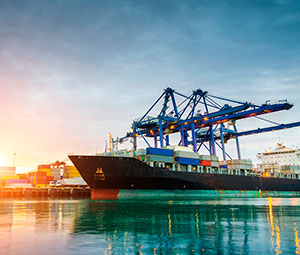
Up until 18 months ago, and for the last decade, the London Cargo Stock Throughput market saw a year-on-year increase in capacity. This competition, not only between syndicates at Lloyd’s and London company markets but also with the US company markets pushed rates down and kept them low.
This meant 10–15% annual reductions were the norm despite the narrowing gap between profit and loss and increases in overhead expenditure.
The soft market also led to broader wordings and coverage was, in some instances, extended to include stand-alone stock, misappropriation, business interruption and processing/product recall sub-limits - blurring the lines between cargo stock throughput and other non-marine classes of business.
If we take all of the above factors into consideration, it is perhaps unsurprising that the results for this sector have been very poor.
A spate of natural disasters, Tianjin, Space X, numerous large misappropriation losses, temperature variation and multiple fire losses on top of the regular and more ‘attritional’ losses led to annual combined loss ratios frequently trending above 100% over a five year period. This left underwriters without any margin to help them absorb losses and has forced insurers to take some corrective action.
How has the market responded and what is changing?
Initially there was a belief that, following the over USD2bn losses sustained by Lloyd’s in 2017, that the reinsurance markets would harden, thus forcing the global cargo stock throughput market to review their position. However, the average reinsurance increase was reported to be around 3% and had little to no impact on direct market rates.
Instead it was Lloyd’s that initially drove changes in the market place, with John Hancock (Performance Director at Lloyd’s) stating that Lloyd’s would reject any syndicate business plans which did not show a reduction in expenses; as these were indicators of ultimate profitability for 2019.
Each syndicate/company has responded by reviewing their portfolio of business, with responses varying from insurer to insurer. Whilst Lloyd’s has returned to profit for the first half of 2018, Lloyd’s continues to concentrate on improving the cargo/stock throughput market’s long-term performance by taking action to address underperforming areas of the market.
These areas include automotive, soft commodities and temperature sensitive goods, specifically, pharmaceuticals, fresh fruit and vegetables.
What does this mean for renewal?
The renewal market of 2019 will pose various challenges for buyers, although much will depend on the precise risk profile and characteristics of the each individual client. Inevitably, long-term ‘core’ clients will continue to attract the best terms and capacity.
- Insurers are undoubtedly being more selective of the risks that they are choosing to write, preferring to decline a risk entirely if it falls outside of their underwriting appetite, as opposed to writing risks to maintain a portion of market share.
- All markets are insisting on rate rises even when an individual risk has had a clean loss history. This is reflective of the losses of the entire portfolio and is not intended to penalise individual clients.
- There has been a consensus between Insurers that rating in respect of storage risks in Catastrophe prone areas needed to be closely monitored and most underwriters are required to run risk modelling before committing to any pricing.
- Insurers are reviewing policy wordings, in some instances sub-limiting certain coverages in order to better manage their exposure and stripping out coverage that would be considered ‘out of class’.
- New markets may be required in instances where underwriters have reduced their overall capacity and/or ceased writing cargo stock throughput business completely.
So what can be done in 2019 to mitigate this environment?
- Insurer arbitrage: Not all insurer offices or individual underwriters behave in the same way. It is important that clients choose to work with the most appropriate underwriters for their risk profile, so that at renewal, the optimal terms can be achieved. Your broker will guide on this.
- Game theory: In order to build significant programmes with the most favourable terms and conditions, brokers must employ game theory strategies to leverage insurers whilst maximising competition and capacity.
- Programme design: Design of programmes in 2019 must be creative; the London Cargo Stock Throughput market can offer around USD750,000,000 any one location including full limits for Catastrophe perils. We need to ensure that we utilise the capacity available to us in the most cost effective manner.
- Worldwide marketing: The utilisation of the full gamut of international insurers on multi layered programmes will be vital at renewal. European markets, plus those in the US and the Middle East/Asia can all provide options for clients as those markets have not hardened as quickly as London.
Top Tips for Buyers
Engage with your broking teams early; as insurers switch their underwriting strategies, risks that we previously reviewed and handled quickly may now be referred ‘up the chain’ to senior underwriters. The renewal process will take longer as a result, so the earlier the process is started, the better.
The need for better underwriting data from clients, irrespective of loss experience. With more insurer selectivity in the London markets, clients must seek to differentiate their risk as much as possible. Your London market broker can guide you on this; but a clear presentation of the risk and timely submission of information will help smooth the renewal process.

